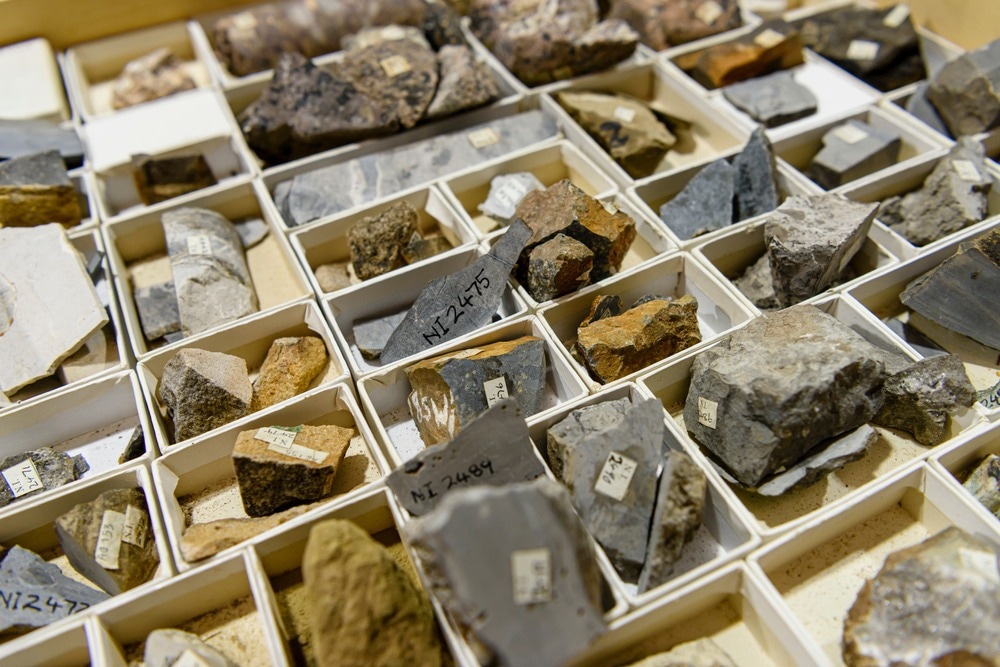Neutron activation analysis, or NAA, is a promising technique that has recently found employment in the field of medicine. It is also important for geological sciences. The method has been used to study geological formations around the world, thermal springs, precious stones, and archaeological objects.

Image Credit: Stephen Barnes/Shutterstock.com
What is Neutron Activation Analysis
Neutron activation analysis is a cutting-edge analytical technique that identifies elements and determines their concentration in numerous different applications.
With accurate, fast gamma spectrometric techniques and advanced data analytics and automation, neutron activation analysis has gained popularity in research and industrial contexts alike.
The analytical technique has reached a stage of maturity now, with the recent development of high-powered neutron sources, accurate and fast neutron detectors, and advanced electronic connections. This has resulted in neutron activation analysis with exceptionally low minimum detection limits.
The procedure involves irradiating samples with neutrons, which results in an emission of gamma rays from isotopes in the sample’s particles. These gamma rays can be detected and counted to indicate the presence and concentration of target elements.
Gamma spectrometric analysis of the sample after it has been irradiated is used to determine the elemental composition and any impurities in the sample.
In non-destructive neutron activation analysis, irradiation tends to take place in a reactor, or from a neutron source. The exposed sample is then analyzed, with no chemical treatments required between irradiation and gamma spectrometric analysis.
There are two subcategories of non-destructive neutron activation analysis: prompt gamma neutron activation analysis (PGNAA) and delayed gamma neutron activation analysis (DGNAA).
The PGNAA method uses instrumentation to count gamma rays when the sample is still being irradiated. The neutrons interact with target nuclei, which become excited and decay to lower energy states, causing gamma radiation.
The reaction takes between 10 and 15 seconds, and PGNAA provides information on the incident neutron flux as well as the sample’s elemental composition.
DGNAA techniques involve irradiating the sample and then waiting until gamma spectrometry is carried out. In this method, the secondary radioisotopes’ decay gamma radiation is measured.
In radiochemical neutron activation analysis, chemical treatments after irradiation separate different elements in the sample, depending on their solubility or other characteristics. Then, separate constituent materials are measured individually.
How Do Geologists Use Neutron Activation Analysis in Their Research?
A recent paper, published in the journal Advanced Technologies and Applications of Neutron Activation Analysis, details numerous other instances of neutron activation analysis providing valuable data for geological studies, with applications ranging as wide as nuclear energy and agriculture, construction, and archaeology.
The different types of neutron activation analysis are all used in geological research, to help scientists find and quantify trace amounts of elements like uranium and rare ores in geological formations.
Non-destructive neutron activation analysis techniques like PGNAA and DGNAA are used for uranium content measurements in phosphate rocks and their surrounding geology.
Geologists use rare earth and other trace element analysis in rock samples to understand the chemistry of different rock formations. Neutron activation analysis data is part of the evidence base suggesting that dinosaurs became extinct soon after a large meteorite landing impacted the whole planet’s weather conditions.
Getting precise measurements of the elemental composition of phosphate rocks is an important step toward developing geochemical models that show how rocks formed over millions of years.
Delayed neutron activation analysis (DNAA) has been employed to help find out how concentrated uranium is in environmental samples of Toshki soil and Aswan iron ore from Egypt as well as phosphate from the Red Sea coast. The study showed that phosphate rocks tend to be rich in natural sources of uranium.
Non-contact neutron activation analysis has been used to determine concentration levels of three major elements (uranium, thallium and potassium) in the Nigerian region of Benue. Scientists observed more thallium here than in other regions, despite no increase in potassium levels.
In nuclear energy production, geologists use neutron activation analysis to determine radioactivity levels in concrete from decommissioned nuclear power plants. Radioactive concrete poses major health and environmental risks, and properly collecting, disposing of, and monitoring it is essential. The high accuracy of neutron activation analysis techniques makes them well suited to this important task.
They enable important trace elemental analyses of rock samples to take place. In one example, geologists used a neutron activation analysis method to find coarse aggregate with a trace amount of shielding material that made it perfectly suited for concrete applications.
Scientists have used the results of neutron activation analysis investigations to develop self-compacting concrete. By analyzing rock samples from 11 different formations around the Indian state of Karnataka, geologists were able to determine which rock types were best suited for self-compacting concrete applications. They found that dolomite rock was the most suitable choice, while Deccan trap and laterite rocks were not recommended.
More from AZoM: What is Glow Discharge Optical Emission Spectrometry
References and Further Reading
El-Tahar, A. (2010). INAA and DNAA for uranium determination in geological samples from Egypt. Applied Radiation and Isotopes. doi.org/10.1016/j.apradiso.2010.01.046.
Medhat, M.E., and M. Fayez-Hassan (2011). Elemental analysis of cement used for radiation shielding by instrumental neutron activation analysis. Nuclear Engineering and Design. doi.org/10.1016/j.nucengdes.2011.03.025.
Nandy, M. (2017). Neutron Activation Analysis: Application in Geology and Medicine. Advanced Technologies and Applications of Neutron Activation Analysis. doi.org/10.5772/intechopen.76726.
Uwah, E.J., and R.J. Rosenberg (1993). Measurement of radioelement contents of rocks of Ugep, S.E. Nigeria, by gamma-ray spectrometric and instrumental neutron activation analysis techniques. Applied Radiation and Isotopes. doi.org/10.1016/0969-8043(93)90028-9.
Disclaimer: The views expressed here are those of the author expressed in their private capacity and do not necessarily represent the views of AZoM.com Limited T/A AZoNetwork the owner and operator of this website. This disclaimer forms part of the Terms and conditions of use of this website.